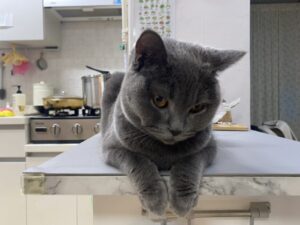Wet vs. Dry vs. Fresh Food: Which Diet Is Best for Your Cat (and When)?

Confused about what to feed your cat? Learn the pros and cons of wet, dry, and fresh food diets, and discover which option suits your feline friend best based on age, health, and lifestyle.
🐾 Wet vs. Dry vs. Fresh Food: Which Diet Is Best for Your Cat (and When)?
When it comes to feeding your feline friend, the options can be overwhelming. Wet food, dry kibble, and fresh food each come with their own benefits and drawbacks. But which one is truly best for your cat—and when should you consider switching diets? In this guide, we’ll explore each type of cat food in depth, helping you make the most informed decision for your pet’s health and happiness.
🥫 What Is Wet Cat Food and When Should You Choose It?
Wet cat food, also known as canned food, is made up of about 70-80% moisture. This high water content can be a game-changer for cats who don’t drink enough water on their own.
Benefits of Wet Food:
- Hydration: Cats are notorious for not drinking enough water. Wet food helps supplement their water intake.
- Palatability: The aroma and texture of wet food often make it more appealing, especially for picky eaters.
- Easier to chew: Ideal for older cats or those with dental issues.
Drawbacks:
- Short shelf life: Once opened, wet food must be refrigerated and consumed within a couple of days.
- Higher cost: Typically more expensive than dry food per serving.
- Messier: It can be more difficult to store and serve than kibble.
When to Feed Wet Food:
- Your cat has urinary tract issues or kidney disease.
- Your cat is a senior and struggles with chewing.
- You’re trying to increase your cat’s hydration.
- Your cat is a finicky eater and needs encouragement to eat.
Pro Tip: If your cat is on a dry food diet, consider mixing in a bit of wet food to enhance taste and moisture.
★ Wet option for easy hydration: Sheba Perfect Portions – Cuts in Gravy — twin-pack trays = zero leftovers, grain-free recipes, irresistible gravy to boost moisture.
🥣 Dry Cat Food: Convenience Meets Nutrition
Dry food, or kibble, is the most commonly used type of cat food. It’s shelf-stable, affordable, and easy to serve—making it a go-to for many cat owners.
Benefits of Dry Food:
- Convenience: Easy to store, measure, and leave out for free-feeding.
- Cost-effective: Generally cheaper than wet or fresh food.
- Dental health: Some kibble is designed to reduce tartar buildup.
Drawbacks:
- Low moisture content: Only about 10% water, which can lead to dehydration.
- Overeating risk: Free-feeding can lead to obesity if not monitored.
- Less appealing: Some cats may find kibble less tasty than wet or fresh options.
When to Feed Dry Food:
- You have a busy schedule and need a low-maintenance option.
- Your cat is healthy and drinks water regularly.
- You’re managing your budget but still want a nutritionally balanced diet.
- You want to support dental health with special dental kibble.
Important Note: Always ensure your cat has access to fresh water when feeding dry food.
★ Dry option for weight & hairball control: IAMS Indoor Weight Control & Hairball Care — L-carnitine for metabolism, fiber blend to cut hairballs, complete & balanced daily nutrition.
🥩 Fresh Cat Food: The Rise of Human-Grade Nutrition
Fresh cat food is a relatively new trend that involves feeding your cat meals made from whole, often human-grade ingredients. These can be homemade or purchased through subscription services like Smalls, Nom Nom, or Raised Right.
Benefits of Fresh Food:
- High-quality ingredients: Often contains real meat, veggies, and essential nutrients.
- Customizable: Can be tailored to your cat’s specific health needs.
- Highly digestible: Fewer fillers mean better absorption of nutrients.
Drawbacks:
- Expensive: Fresh food diets can be significantly more costly.
- Storage and prep: Requires refrigeration or freezing and regular meal prep.
- Short shelf life: Needs to be consumed within a few days once thawed.
When to Feed Fresh Food:
- Your cat has food allergies or sensitivities.
- You want to provide the most natural, minimally processed diet.
- Your vet recommends a specific diet for health conditions.
- You’re committed to investing in premium nutrition.
Tip: Transition gradually to fresh food to avoid digestive upset.
📊 Quick Comparison Table
| Feature | Wet Food | Dry Food | Fresh Food |
|---|---|---|---|
| Moisture Content | High (70-80%) | Low (10%) | Moderate to High |
| Cost | Moderate to High | Low | High |
| Shelf Life | Short (after opening) | Long | Short (refrigerated) |
| Convenience | Moderate | High | Low to Moderate |
| Palatability | High | Moderate | Very High |
| Dental Benefits | Low | Moderate | Low |
| Customization | Low | Low | High |
🐱 So, Which Diet Is Best for Your Cat?
There’s no one-size-fits-all answer. The best diet for your cat depends on their age, activity level, health conditions, and your lifestyle. Many veterinarians recommend a mixed feeding approach—combining wet and dry food to balance hydration, cost, and convenience. Fresh food can be a great option if you’re looking for premium, customized nutrition and are willing to invest the time and money.
✅ Final Thoughts & Call to Action
Feeding your cat isn’t just about filling a bowl—it’s about supporting their long-term health and happiness. Whether you choose wet, dry, or fresh food, the key is to prioritize quality ingredients, monitor your cat’s health, and adjust their diet as needed.
Ready to upgrade your cat’s diet? Talk to your vet, research trusted brands, and consider trying a mixed approach to see what your feline friend prefers. A well-fed cat is a happy cat—and a happy cat makes for a happy home. 🐾